Pump systems:
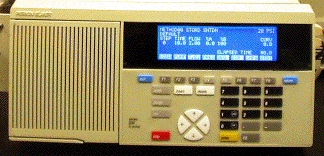
HPLC pumps can be single, binary, or ternary, meaning that the can make use of one, two, or more different solvent reservoirs. (Most ternary pumps actually have four solvent reservoirs.) The image on the right shows a fairly typical ternary pump, which can be controlled via either the front panel or computer control. The key parts of such a pump system are the proportionating valve, the mixing chamber, the purge valve, and the actual pump mechanism.
Solvent mixing:
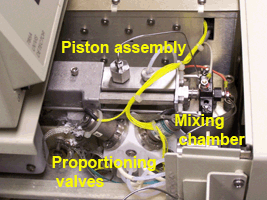
The proportionating valve (lower-front of image) allows the desired volume ratio of the different solvents to be drawn from the reservoirs. For example, if reservoir A contained water and B methanol, the following pump settings would give a 50:50 water:methanol mixture – A=50%, B=50%, C=0%, D=0%. To ensure a uniform composition, a mixing chamber (middle-right of image) is used. This particular pump uses a reciprocating piston (upper-centre of image) to actually deliver the mobile phase mixture at the required flow rate.
Pump assembly:
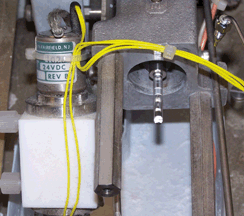
This view shows the pump disassembled. The glass rod in the centre of the image is the piston; the pump chamber has been removed. The solenoid valve to the upper-left of the piston is one of the proportioning valves. Routine maintenance requires that the seals preventing leaks around the piston be replaced periodically.
Check valves:
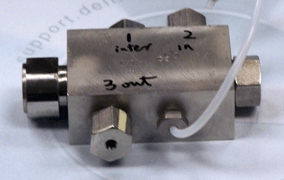
This view shows the pump body removed from the piston assembly. The piston assembly connects to the large collar on the left of the unit. The mobile phase enters through the top-right connector and leaves through the bottom-left connector. The nuts adjacent to these on the upper and lower sides actually retain the check valves, which are essential to the working of the pump; they basically determine the direction through the pump taken by the mobile phase.
Purge valve:
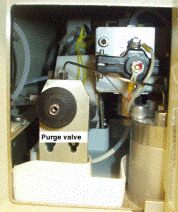
Reciprocating piston pumps do not work if there is air in the lines, which can be the case after changing a solvent reservoir, or leaving the pump off. Opening the purge valve allows the contents of the lines to be flushed out without the contents entering the injector or column. It’s important to remember to close the purge valve before trying to perform an experiment!